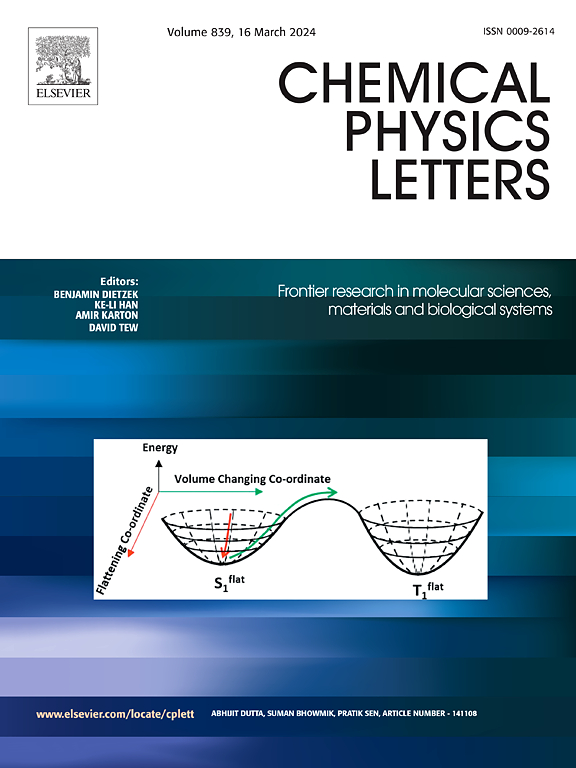小气体分子(C2H2, CH4, CO和H2)吸附在Au, ag掺杂ZnO单层上的DFT研究
IF 2.8
3区 化学
Q3 CHEMISTRY, PHYSICAL
引用次数: 0
摘要
本文利用DFT计算研究了气体小分子(C2H2, CH4, CO和H2)与纯ZnO, Ag-ZnO和Au-ZnO单层的相互作用,以探索其在气感领域的潜在应用。其中,对C2H2和CH4的吸附效果较好,吸附能增加1 eV,对其他气体的吸附效果也有所提高(CO:−0.63 eV ~−1.03 eV, H2:−0.68 eV ~−1.44 eV)。吸附能的增加可以用电荷转移、态密度和功函数等参数来解释。同时,本征氧化锌不适合气体检测和吸附,而Au-ZnO单层膜适合检测C2H2、CH4、CO和H2。气体吸附后,吸附模型的电导率有不同程度的变化。研究结果为用zno基材料构建气体传感器提供了理论基础。本文章由计算机程序翻译,如有差异,请以英文原文为准。

DFT study of small gas molecules (C2H2, CH4, CO and H2) adsorbed on Au, Ag-doped ZnO monolayer
In this paper, the interactions of small gas molecules (C2H2, CH4, CO and H2) with pure ZnO, Ag-ZnO and Au-ZnO monolayer were investigated using DFT calculations to explore their potential applications as gas sensing. Among them, the adsorption effect on C2H2 and CH4 was better with an increase of 1 eV in adsorption energy, and the adsorption effect of other gases was improved (CO: −0.63 eV to −1.03 eV, H2: −0.68 to −1.44 eV). The increase in adsorption energy was explained by parameters such as charge transfer, density of states and work function. Meanwhile, intrinsic ZnO is unsuitable for gas detection and adsorption, while the Au-ZnO monolayer suits C2H2, CH4, CO and H2 detection. The electrical conductivity of the adsorption models is changed to varying degrees after gas adsorption. The research results act as a theoretical foundation for constructing gas sensors with a ZnO-based material.
求助全文
通过发布文献求助,成功后即可免费获取论文全文。
去求助
来源期刊

Chemical Physics Letters
化学-物理:原子、分子和化学物理
CiteScore
5.70
自引率
3.60%
发文量
798
审稿时长
33 days
期刊介绍:
Chemical Physics Letters has an open access mirror journal, Chemical Physics Letters: X, sharing the same aims and scope, editorial team, submission system and rigorous peer review.
Chemical Physics Letters publishes brief reports on molecules, interfaces, condensed phases, nanomaterials and nanostructures, polymers, biomolecular systems, and energy conversion and storage.
Criteria for publication are quality, urgency and impact. Further, experimental results reported in the journal have direct relevance for theory, and theoretical developments or non-routine computations relate directly to experiment. Manuscripts must satisfy these criteria and should not be minor extensions of previous work.
 求助内容:
求助内容: 应助结果提醒方式:
应助结果提醒方式:


